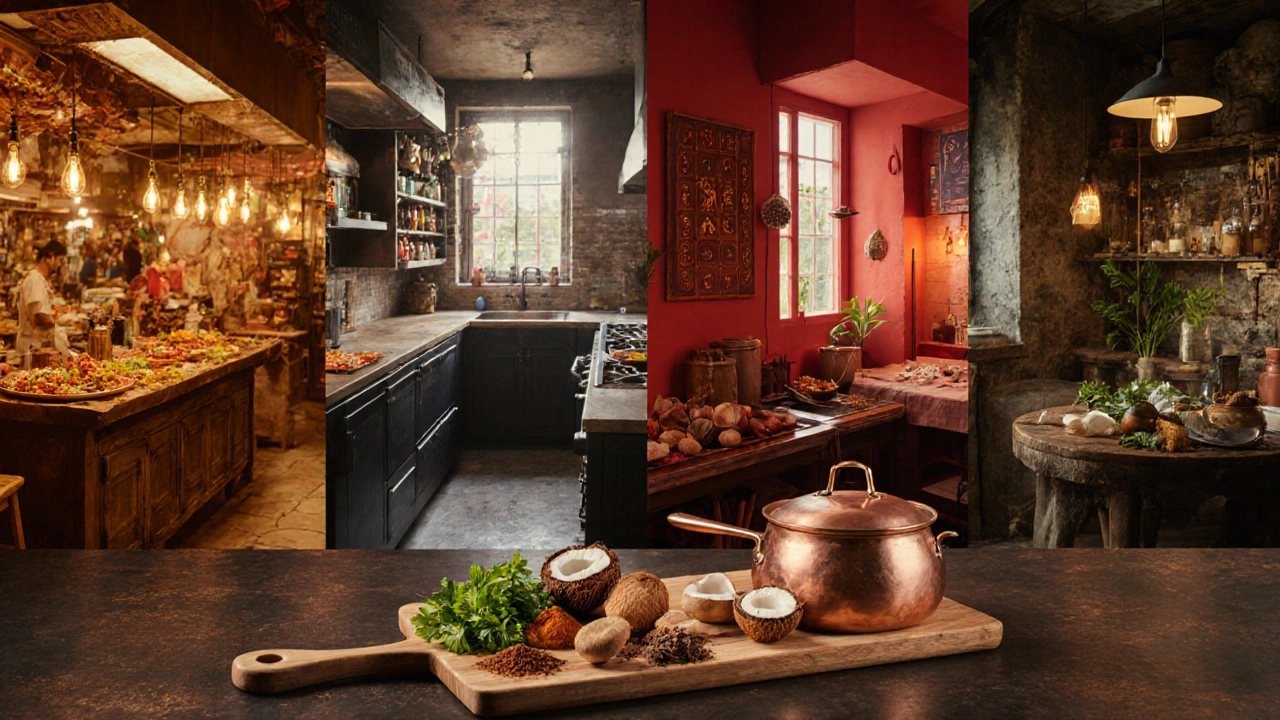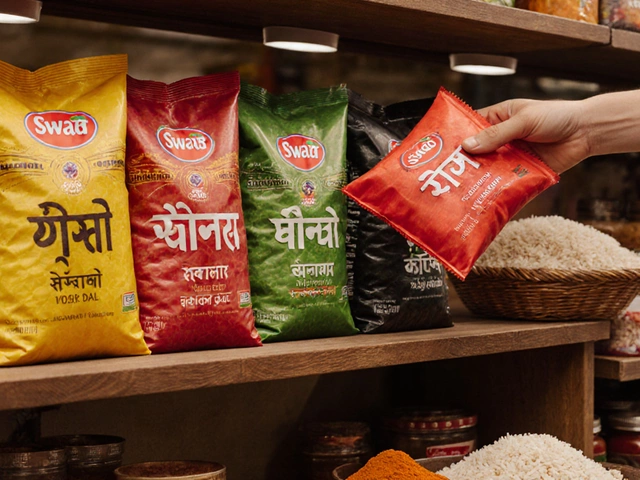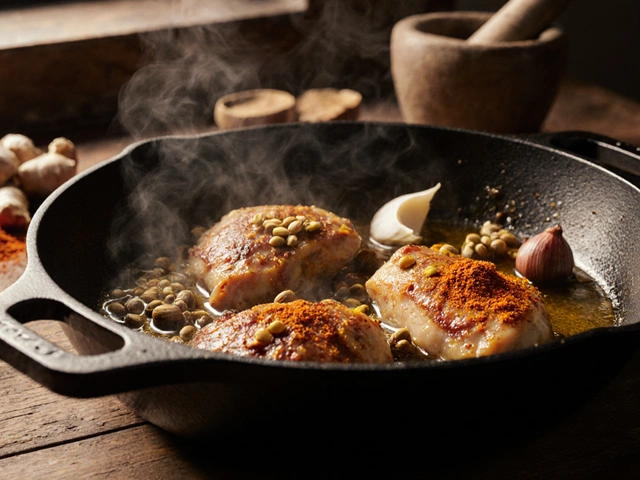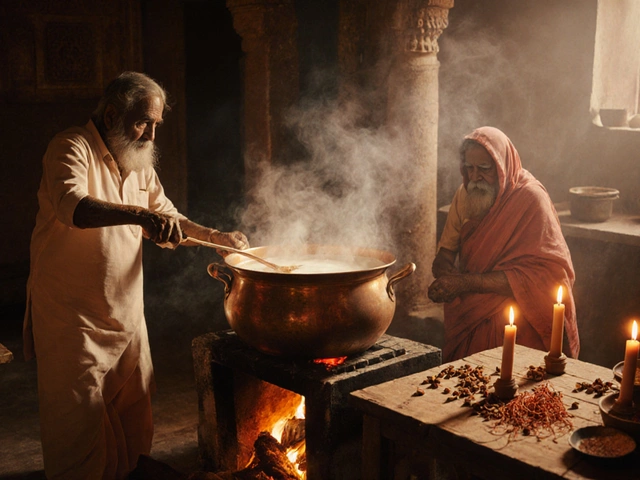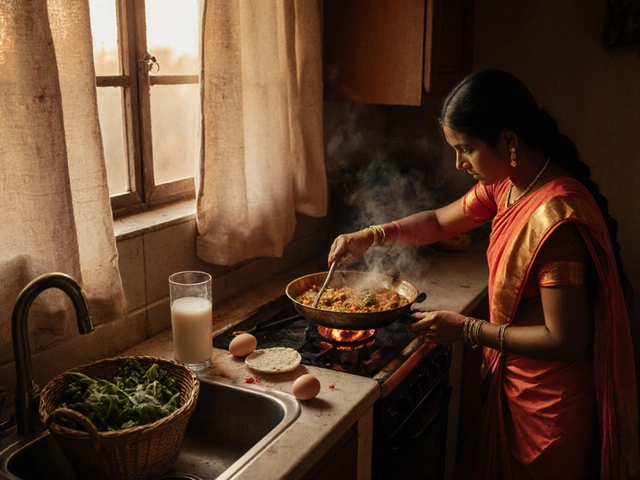World's Tastiest Curry Selector
Butter Chicken
North India
MildThai Green Curry
Thailand
Medium-HotJapanese Curry
Japan
MildRendang
Indonesia/Malaysia
MediumKorma
North India
MildCurry Details
Select a curry from above to view its details and recipe.
Key Ingredients
- Flavor Depth: Toasted spices, aromatics, umami boosters
- Heat Balance: Chili’s punch complements underlying flavors
- Texture: Sauce clings without being soupy
- Techniques: Layering, proper heat control, resting time
Tips for Success
- Always bloom spices in oil or butter
- Use fresh herbs for final garnish
- Control heat timing for desired intensity
- Adjust thickness with coconut milk or stock
- Let curry rest 10 minutes after cooking
Ever wondered which dish actually wins the crown for the tastiest curry on the planet? Around kitchens from Mumbai to Bangkok, chefs argue, food lovers vote, and taste buds decide. Below you’ll discover the criteria that separate an average bowl from a legend, the five curries that consistently top the taste charts, and the exact steps to bring each masterpiece to your own table.
Key Takeaways
- Flavor depth, spice balance, and aroma are the three pillars of a great curry.
- Thai green curry, Indian butter chicken, Japanese curry, Malaysian rendang, and Indian korma are the global leaders.
- Each winning curry can be recreated at home with a handful of core ingredients and a few technique tweaks.
- Use fresh herbs, quality spices, and proper layering to achieve restaurant‑level taste.
- A quick checklist helps you avoid common pitfalls like burnt spices or watery sauces.
What Makes a Curry Truly Delicious?
When you bite into a curry, three things happen at once: the heat hits your palate, the aroma floods your senses, and the sauce coats every bite with richness. Experts break this down into:
- Flavor depth - layers built from toasted spices, aromatics, and umami boosters.
- Heat balance - chili’s punch should complement, not overpower, the underlying flavors.
- Texture - a sauce that clings without being soupy, and protein that stays tender.
Chefs who understand these pillars can dial in the perfect harmony, regardless of the regional style.
Ranking the World’s Tastiest Curries
We evaluated over 30 popular curries using the three pillars above, plus a fourth factor: cultural love‑score (how often locals rave about it). The result? A tight, five‑spot leaderboard.
| Curry | Origin | Main Protein | Key Flavor Notes | Heat Level |
|---|---|---|---|---|
| Butter Chicken Curry | North India | Chicken | Tomato‑cream, garam masala, butter | Mild |
| Thai Green Curry | Thailand | Chicken or shrimp | Coconut, lemongrass, green chilies | Medium‑Hot |
| Japanese Curry | Japan | Beef, pork, or veg | Sweet‑savory, roux‑thickened | Mild |
| Rendang | Indonesia/Malaysia | Beef | Coconut, tamarind, toasted spices | Medium |
| Korma | North India | Chicken or lamb | Almond‑cream, mild spices, yogurt | Mild |
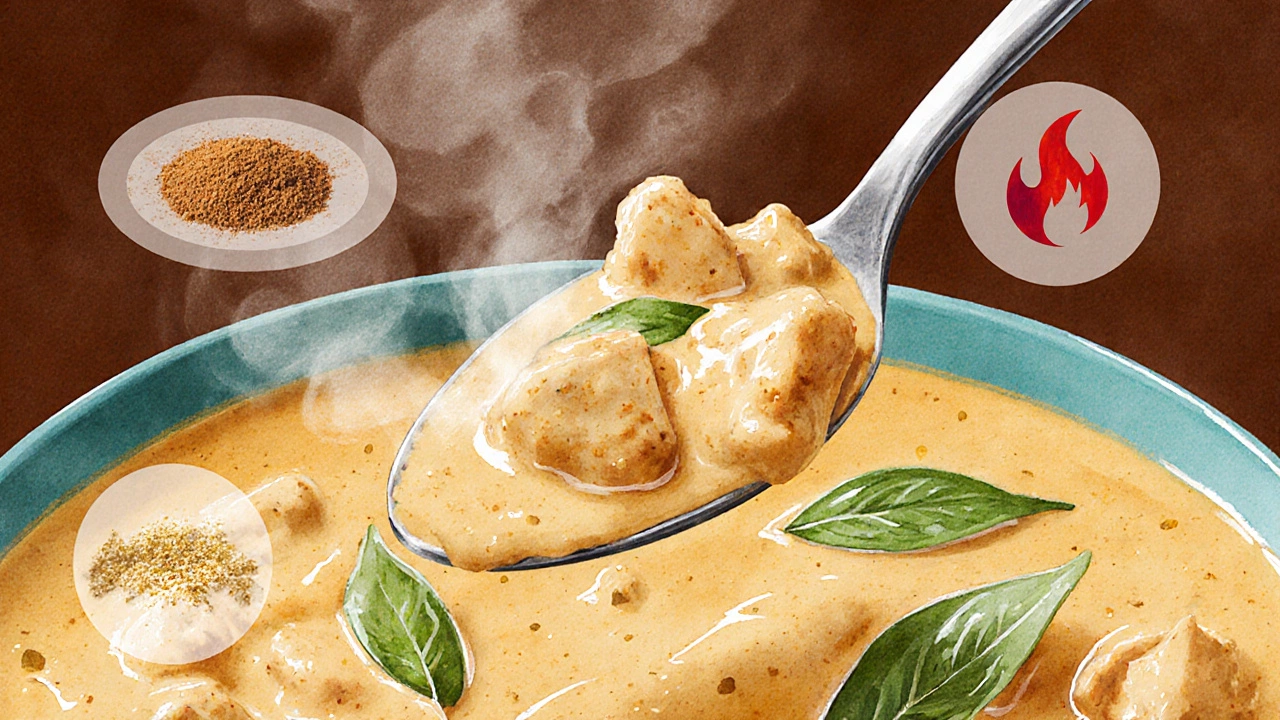
1. Indian Butter Chicken Curry
Butter Chicken (murghmakhani) earned its spot thanks to silky richness and universal appeal. The sauce starts with a tomato‑onion puree, then gets enriched with butter, cream, and a pinch of garam masala. The secret is a quick marination: yogurt, ginger‑garlic paste, and a dash of chili powder for 30minutes, which locks in moisture.
Make it at home:
- Blend 400g canned tomatoes, 1large onion, and 2tbsp ginger‑garlic paste until smooth.
- Heat 3tbsp butter, add the puree, simmer 10min.
- Stir in 200ml heavy cream, 1tsp garam masala, and ½tsp smoked paprika.
- Add pre‑marinated chicken pieces; cook 12min until tender.
- Finish with a splash of fresh lemon juice and chopped cilantro.
Tips: Don't scorch the butter; low heat keeps the sauce velvety.
2. Thai Green Curry
Thai Green Curry dazzles with aromatic herbs and a bright coconut base. The green paste is a blend of Thai green chilies, galangal, kaffir lime leaves, cilantro roots, and shrimp paste. Together they give the dish its signature fresh heat.
Home version:
- Toast 2tbsp green curry paste in 2tbsp coconut oil for 30seconds.
- Add 400ml coconut milk; bring to a gentle boil.
- Drop in 250g chicken breast (thin strips) and 5tbsp sliced bamboo shoots.
- Season with fish sauce, palm sugar, and a squeeze of lime.
- Serve over jasmine rice; garnish with Thai basil.
Pro tip: Use fresh green chilies instead of dried powder for a brighter flavor.
3. Japanese Curry
Japanese Curry is comfort in a bowl-sweet, savory, and thick like a stew. The hallmark is a roux made from butter, flour, curry powder, and grated apple, which adds a subtle fruitiness.
Simple stovetop method:
- Sauté 1cup diced onions, 1cup carrots, and 1cup potatoes in 2tbsp butter until lightly browned.
- Add 300g bite‑size beef; brown quickly.
- Pour in 3cups water, simmer 15min.
- Stir in 3tbsp Japanese curry roux block; melt fully.
- Finish with 1tbsp grated apple and a dash of honey.
Serve over steamed rice and top with pickled ginger for contrast.
4. Malaysian/Indonesian Rendang
Rendang is, technically, a dry‑cooked curry that ends up caramelized and tender. The slow simmer in coconut milk and toasted spices creates a deep, nutty flavor that many call “the king of curries.”
Key steps:
- Grind a paste of lemongrass, galangal, turmeric, chilli, and toasted coriander seeds.
- Fry the paste in 2tbsp coconut oil until fragrant (5min).
- Add 500g beef cubes, coat well, then pour in 400ml coconut milk.
- Simmer low‑heat for 2‑3hours, stirring occasionally, until liquid evaporates and meat is glossy.
- Season with tamarind paste and a pinch of palm sugar.
Result: a thick, glossy coating that clings to every bite.
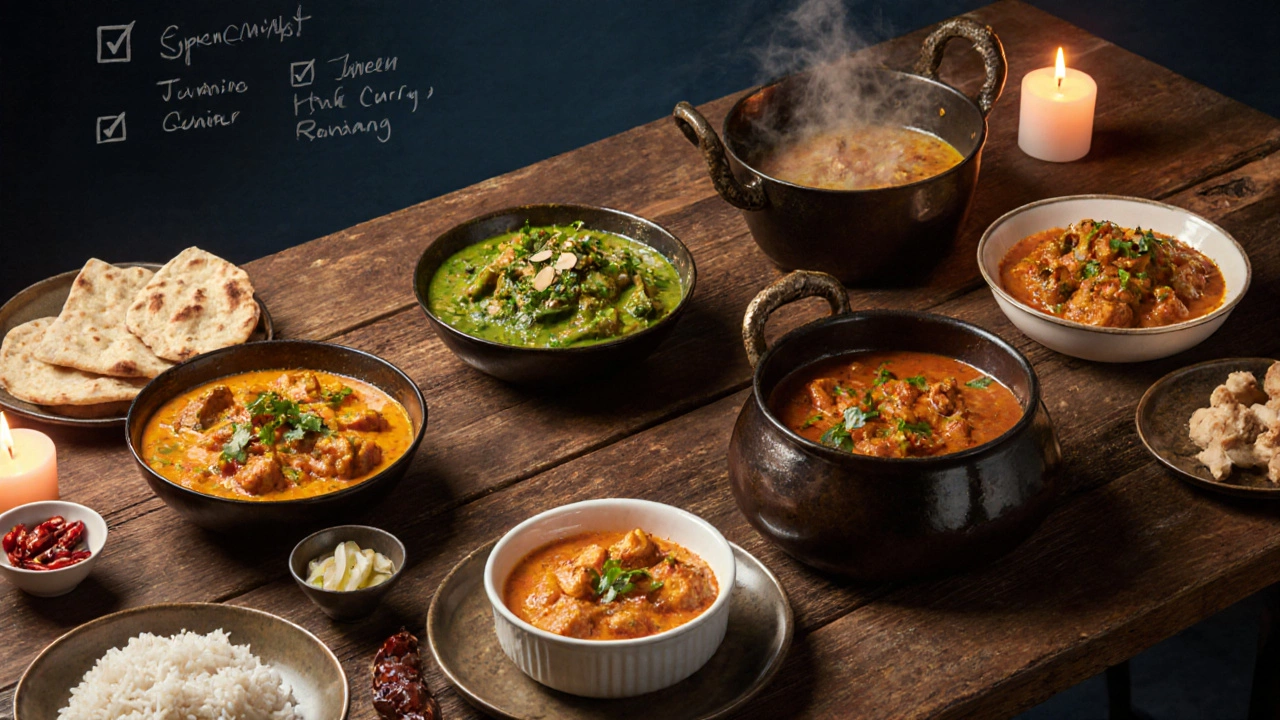
5. Indian Korma
Korma charms with its creamy, nut‑based sauce. Ground almonds, cashews, and a splash of yogurt create a luscious texture, while mild spices keep the heat gentle.
Quick korma recipe:
- Soak ¼cup each of almonds and cashews for 30min; blend into a smooth paste.
- Sauté 1large onion, 2tbsp ginger‑garlic paste, and 1tsp cardamom in 2tbsp ghee.
- Stir in the nut paste, 200ml coconut milk, and 100ml yogurt.
- Add 300g chicken thighs; cook 15min until done.
- Finish with a handful of fresh coriander and a drizzle of rose water.
Serving tip: Pair with saffron‑infused basmati rice for a royal feel.
Practical Checklist: Avoiding Common Curry Mistakes
- Never add spices to a dry pan; always bloom them in oil or butter.
- Use fresh herbs for the final garnish- dried herbs lose aroma quickly.
- Control heat by adding chilies early (for deeper heat) or at the end (for surface spice).
- Adjust thickness with coconut milk or stock, not with flour, unless making a roux‑based curry.
- Rest the curry 10minutes after cooking; flavors meld and sauce thickens.
Cooking for Different Palates
If you’re cooking for a crowd, keep the base mild and serve heat‑boosters on the side- sliced fresh chilies, chili oil, or a dollop of harissa. For spice lovers, increase the chilies in the paste and finish with a drizzle of infused oil.
Frequently Asked Questions
What defines a curry versus a stew?
A curry traditionally relies on a spice‑laden sauce that carries aromatics like cumin, coriander, and chilies. A stew may use fewer spices and focuses more on the broth and the meat or veg. The presence of a distinct spice blend is the key differentiator.
Can I make these curries vegetarian?
Absolutely. Swap chicken or beef for paneer, tofu, or hearty vegetables like cauliflower and jackfruit. Keep the spice base the same; the flavor profile remains authentic.
How long can I store homemade curry?
Refrigerated in an airtight container, most curries stay fresh 3‑4days. For longer storage, freeze in portion‑sized bags for up to 2months. Thaw gently and re‑heat on low to preserve texture.
Why does my curry taste flat after cooking?
Flatness often means spices weren’t toasted enough or the sauce was too watery. Always bloom spices in fat, and if the sauce is thin, finish with a splash of cream, coconut milk, or a teaspoon of nut paste to add richness.
Which curry pairs best with rice versus bread?
Thick, gravy‑rich curries like butter chicken, korma, and Japanese curry cling beautifully to rice. Drier, spice‑intense curries such as rendang or South Indian coconut‑based curries are perfect for soaking up with naan, roti, or paratha.
